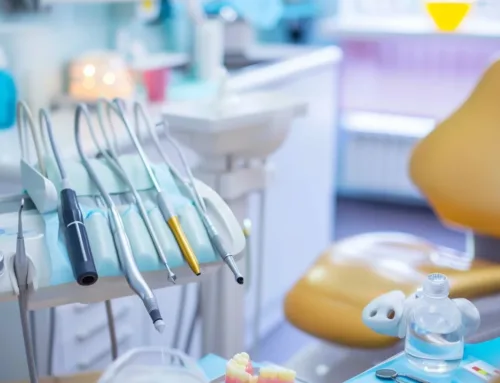Exploring Sedation Options for Dental Treatments & Procedures
The use of sedation in dentistry is quite common, and is available in a variety of different forms depending on the nature of the procedure and the needs of the individual patient. Understanding when sedation would be recommended, when it may not be necessary, and what types of sedation are most suitable for a patient are important aspects of your dental care.
Modern dental care is far more gentle and comfortable than it has ever been. Advanced new technology and equipment allow dentists and hygienists to perform their tasks with greater effectiveness. Techniques and methods used in dental care also undergo continual improvement to provide patients with a better experience. In addition, modern dentistry uses a diverse range of anesthetic and sedation types to give patients a pleasant and comfortable experience during many different dental procedures.
So, when you have a need for some dental work, what can you expect to be offered for sedation? In general, this will depend on a combination of the nature of the procedure being performed and the specific needs of the patient. Let’s start by examining a variety of common dental treatments that often include some level of sedation for the patient.
What Kinds of Dental Treatments May Require Sedation?
There are many different types of dental treatments that you may need over the course of your lifetime. The routine procedures of tooth cleaning, polishing, and scaling are typically performed without any need for sedation or anesthetic. Tooth whitening sessions and other cosmetic treatments are also done without sedation in many cases.
Generally, sedation is reserved for dental work that involves more extensive repair or restoration to the teeth and gums, this includes:
1.) Fillings, Crowns & Dental Bridges
When a cavity forms in a tooth, the dentist must first prepare the area before it can be filled. This involves removing the decayed tooth material and re-shaping the affected area to accept the filling and prepare the surface to which the repair material can most effectively bond.
Dental crowns replace larger sections of the tooth that have been chipped or cracked due to accidental impacts or have experienced more advanced levels of decay. With a dental crown, the entire upper section of the tooth is shaped to remove the damaged material and get the tooth ready to accept the replacement crown.
Dental bridges are used to address the problem of a lost tooth. In the case of a dental bridge, the two teeth on either side of the gap are prepared in a similar fashion to what is done for dental crowns. In order to accept the bridge, the adjacent teeth are shaped and reduced to create an optimum bond for the adhesive used to affix the prosthesis.
In all of these types of situations, the dentist will use dental drills and other tools to conduct this work, and will often provide the patient with mild to medium sedation to make them more comfortable. The vibrations created from the grinding action may create discomfort or pain in the sensitive roots of the teeth for some patients, but mild sedation or a local anesthetic is usually sufficient to prevent this.
2.) Tooth Extractions & Wisdom Teeth
There are many reasons why a tooth may need to be extracted. It could be that the tooth has become damaged due to an impact and is not structurally sound enough to be properly repaired. It may be the result of extensive tooth decay, necessitating removal to prevent infection. It could also be a preventive measure to avoid the problem of tooth crowding which can result in many other dental health issues over time, as is the case with the removal of wisdom teeth. Sedation is used during tooth extractions to provide a pain-free experience for the patient. Depending on the number of teeth being extracted and how impacted the teeth are, sedation for tooth extractions may range from a mild local anesthetic for a single tooth, to heavy sedation for extraction of multiple wisdom teeth.
3.) Root Canals & Infection Treatments
When a tooth becomes infected at the root or inside the pulp of the tooth, the treatment for a root canal involves drilling into the tooth to remove the damaged material and clean out the infection. As these types of infections occur deep within the tooth and under the gum line, moderate to heavy sedation is required to provide the proper level of comfort for the patient. In some cases the sedation given to the patient will keep them awake and lucid, but in a state of deep relaxation, while in other cases the patient may be fully asleep and have no memory of the procedure at all.
4.) Dental Implants & All-on-4 Full-Mouth Restoration
Receiving a dental implant to address the problem of a lost tooth requires the preparation of the gum and bone to accept the artificial tooth to ensure a proper bond. Mild sedation may be sufficient for a dental implant procedure if the jaw tissues and bone are otherwise strong and healthy, and the implant procedure is only replacing a single tooth. However, for patients who require a bone graft in the area in order to provide enough structure for the dental implant to adhere to, heavy sedation is used.
All-on-4 is an innovative mouth restoration procedure that uses strategically-placed dental implants on the top and bottom jaws, creating anchors to which a complete arch of replacement teeth are attached. All-on-4 provides far superior levels of comfort and confidence for patients when compared to traditional dentures. Due to the type of dental work needed to place four implants in each of the top and bottom jaws, the type of sedation used can be moderate in some cases, but mostly involves full or heavy sedation.
5.) Gum Rejuvenation & Pinhole Surgical Technique Procedures
For patients with gum disease, immediate treatment is needed to restore the gums back to health and avoid the condition progressing to a more severe state. Gum disease causes the soft tissues around the teeth to be sore, swollen, and very sensitive. Treating gum disease involves extensive cleaning of the teeth and gum pockets, requiring combinations of local anesthetic and mild sedation to provide the patient with the appropriate level of comfort.
Gum disease, also known as periodontitis, can also be treated with a minimally-invasive procedure known as the Pinhole Surgical Technique (PST). Treating the gums with the PST method includes making a tiny incision in the gums through which specialized tools can be inserted. Using these tools, the gums are manipulated and repositioned to fix receding gums and help restore the mouth back to a better state of health. During the PST procedure, mild to moderate sedation is used to prevent pain and increase the patient’s comfort level.
Additionally, dental sedation may be used when the patient has an extreme level of anxiety about dental treatments. This typically involves having the patient see their family doctor for a prescription sedative such as triazolam, zaleplon or lorazepam.
What Are the Types of Dental Sedation?
When we refer to the level of sedation as ‘mild, medium, or heavy’, it doesn’t necessarily refer to the dosage of the anesthetic or sedation, but rather the way the sedation works to affect the body. Some anesthetics work only on a very specific part of the body, whereas others affect the entire body.
- Mild sedation typically refers to sedatives that allow the patient to remain awake and alert during the dental procedure, but with pain suppressed to provide better comfort.
- Moderate sedation refers to methods that reduce the patient’s overall awareness, as well as block pain reception, but the patient remains awake for the duration in a state of extreme relaxation.
- Heavy sedation usually refers to those types of sedation where the patient is unconscious and unaware during the procedure, leaving them no memory of the experience when they awake afterwards.
Let’s explore the common methods of dental sedation in a bit more detail.
Local Anesthetics – When a specific part of the body needs to be numbed to prevent the patient from feeling pain, a local anesthetic is used. Local anesthetics typically come in one of two forms; an injection from a syringe into the area, or a topical gel that is spread onto the soft tissue of the area. Both forms of local anesthetic are colloquially known as ‘freezing’. The compounds found in local anesthetics interact with the nerves in the area where the anesthetic is applied, causing them to stop sending pain signals to the brain. The effects are only temporary, and usually wear off after a few hours, long after the dental procedure is complete and the patient has been released.
Oral Sedatives – When sedation is administered to the patient in pill form, it is known as an oral sedative. These sedatives are often used as alternatives to local anesthetics if the patient has a strong aversion to needles. Oral sedatives must be taken prior to the start of a procedure so the medication has enough time to disperse in the body and provide the necessary effects. Patients under the effect of oral sedatives must be driven to and from their appointment, as it can take several hours for the sedation to wear off.
Nitrous Oxide – More commonly known as ‘laughing gas’, nitrous oxide is a sedative method that is popular in dental clinics due to its effectiveness and ease of use. Through a mask that covers the nose and mouth, patients are instructed to inhale deeply. As the nitrous oxide enters the bloodstream through the lungs, it creates an immediate relaxing effect. Patients remain awake while on nitrous, as the gas must be inhaled at regular intervals to maintain the desired level of sedation. Nitrous also has the added advantage of wearing off quickly once the procedure has been completed, allowing patients to return to their regular activities sooner than other types of sedation.
IV Sedation – IV sedation, or intravenous sedation, is administered through a direct line inserted into the vein of the patient. IV sedations come in a wide range, from mild to heavy, depending on the needs of the patient and the nature of the procedure. IV sedation has the advantage of being quickly adjustable during the procedure in the event that additional sedation may be required. This type of sedation is most often used when the patient must be entirely asleep or unconscious during the procedure.
General Anesthesia – The heaviest form of sedation is general anesthesia. This method combines IV sedation and gas sedation to put the patient entirely to sleep with no self-awareness, and is generally reserved for only the most extensive surgical procedures. This type of sedation is only administered by specialized anesthesiologists, as the patient must be closely monitored. In addition, general anesthesia takes more time to recover from after the procedure than most other types of sedation.
Can You Request Sedation Even if the Procedure Does Not Require It?
It’s quite common for patients to have varying levels of anxiety about undergoing dental procedures, and in most cases, sedation can be offered to provide greater comfort. It’s always best to have a frank and open discussion with your dentist about your concerns related to anxiety and your dental care. They will be able to provide all the details you need to know about your options for sedation, and clearly explain what you can expect.
Dental insurance policies and benefits programs do not always cover sedation in the same way for all types of procedures, so it’s also important to check to see what level of coverage is available under your benefits plan. This is another question that your dentist will be able to help answer for you, or a quick call to your plan provider can also provide clarity.
Comfortable, Pain-Free Dental Care for Your Entire Family at Georgian Dental
Here at Georgian Dental, we are proud to offer patients a diverse range of sedation and anesthetic options to provide optimum comfort and the best possible outcome from all dental procedures. Our caring and experienced team of professionals will walk you through all your available options in complete detail, answering every question to your complete satisfaction. Give us a call today to arrange for your next dental appointment & learn more. We look forward to seeing you soon!
Appointment Request
If you’re interested in any of our procedures, and would like to meet with one of our dentists to discuss options, costs and get additional information, complete this short form and we’ll give you a call to arrange for a no-obligation appointment at our Barrie clinic.










